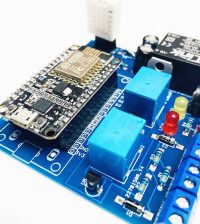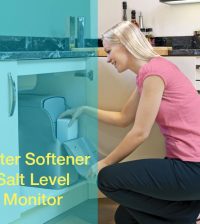- How to Adjust X and Y Axis Scale in Arduino Serial Plotter (No Extra Software Needed)Posted 3 months ago
- Elettronici Entusiasti: Inspiring Makers at Maker Faire Rome 2024Posted 3 months ago
- makeITcircular 2024 content launched – Part of Maker Faire Rome 2024Posted 6 months ago
- Application For Maker Faire Rome 2024: Deadline June 20thPosted 7 months ago
- Building a 3D Digital Clock with ArduinoPosted 12 months ago
- Creating a controller for Minecraft with realistic body movements using ArduinoPosted 1 year ago
- Snowflake with ArduinoPosted 1 year ago
- Holographic Christmas TreePosted 1 year ago
- Segstick: Build Your Own Self-Balancing Vehicle in Just 2 Days with ArduinoPosted 1 year ago
- ZSWatch: An Open-Source Smartwatch Project Based on the Zephyr Operating SystemPosted 1 year ago
Earth Day 2016: best 3D printing projects contributing to a greener planet
In the past year, Earth has seen monthly temperatures reach record highs, Arctic ice levels plummet to new lows, and CO2 levels spike like never before. Meanwhile, the average American is producing four pounds of garbage and consuming 100 gallons of water every day.
Here is a selection, from 3ders.org, of the most interesting projects to save our Earth:
3D printing project #1: Turn your water bottle in an elegant 3D printed vase

This brilliant yet simple 3D printed project allows you to do just that, by taking a boring and trashy old water bottle and re-inventing it as a beautiful and decorative flower vase. Created by Libero Rutilo of Design Libero, the 3D vases are mesh-like shells that slide overtop of PET bottles and then screw on, just like a cap, to stay in place. This way, the bottle stays out of the trash, but also out of sight.
3D printing project #2: 3DPonics 3D printed hydroponics lets you grow your own food

3DPonics is an open-source initiative to develop affordable and 3D printable urban food gardens. Hydroponics is a very sustainable and easy way to grow healthy, natural food indoors, as it requires very little energy, no pesticides, and no messy soil. 3DPonics makes it even easier, by providing users with free, customizable and 3D printable blueprints to create their own hydroponics systems at home using little more than old PET bottles and a single air pump.
3D printing project #3: 3D printed water and wind turbines produce clean energy

In the wind department, Kansas-based Michael Curry has 3D printed a wind turbine that generates up to 9 volts of electrical power from just a slight breeze. In nearby Minneapolis, Verterra Energy is prototyping an innovative 3D printed water turbine that could be used to produce sustainable hydropower.
3D printing project #6: Faircap 3D printed water filters provide clean water for just $1

The Faircap 3D printed water filter is able to filter particles, chemicals, bacteria and viruses from the dirtiest of water, all while fitting onto a standard sized water bottle. To make one, all you need is a 3D printer, food-grade, FDA approved PET plastic filament, the free STL files, and household items such as charcoal from a BBQ, cotton swabs, and an empty 5-8 liter water jug.
Source: 3ders.org – Earth Day 2016














